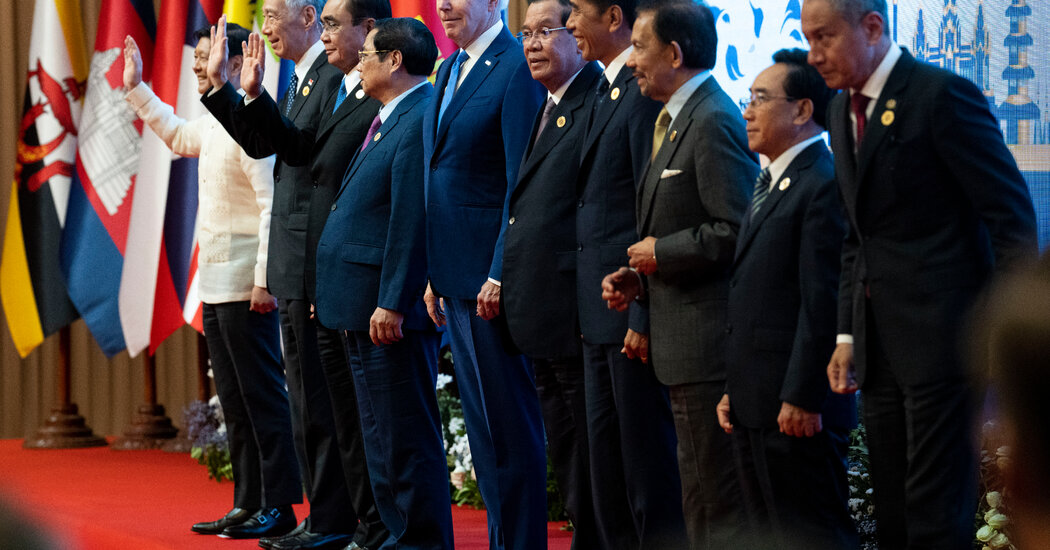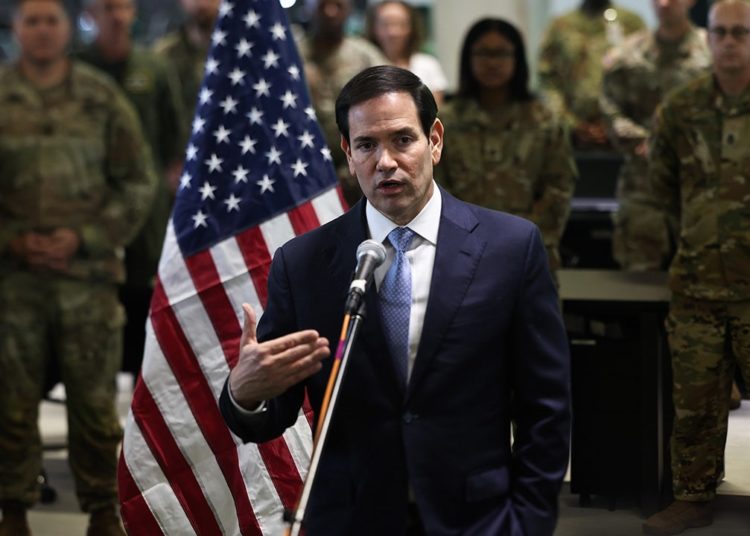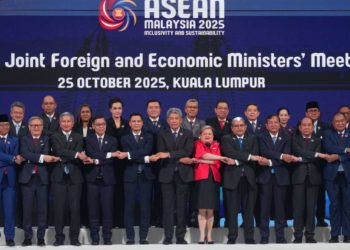For his first stop on a whirlwind tour of Asia, President Trump will visit Malaysia on Sunday to attend a summit of the Association of Southeast Asian Nations, an organization of growing global importance that represents nearly 700 million people.
The association, known as ASEAN, comprises 10 member states in Southeast Asia: Brunei, Cambodia, Indonesia, Laos, Malaysia, Myanmar, the Philippines, Singapore, Thailand and Vietnam. On Sunday, it was officially inducting an 11th member: East Timor.
The bloc is home to roughly 680 million people and has the fifth-largest economy in the world, with a combined gross domestic product of more than $3.6 trillion.
As its economy has strengthened in recent years, so too has its importance in the global market. The United States, China and the European Union have all sought to increase trade with the organization’s members.
For the United States, ASEAN is significant for both the size of its economic market and its geostrategic importance as a bulwark against China. Collectively, the bloc is the fourth-largest trading partner for the United States, and the region is an important supply-chain hub for many American companies that have moved out of China.
ASEAN, formed in 1967 to promote regional stability and economic development during the post-colonial era, prides itself on not interfering in the internal affairs of member states. It often describes its consensus-based decision-making process as the “ASEAN Way.” But this approach has hampered the group’s ability to respond swiftly to crises like the civil war in Myanmar and the growing number of online scam centers in countries like Cambodia and Myanmar.
The United States says ASEAN is central to a “free and open Indo-Pacific,” Washington’s longstanding strategy to counter China’s growing influence in the region.
Many Southeast Asian states are threatened by China’s increasingly assertive claims in the South China Sea and welcome Washington’s presence in the region. But they have questions about America’s commitment to their region at a time of domestic political turmoil and other wars in the world.
Most ASEAN states want to have good relations with both the United States and China and are frustrated that Mr. Trump’s aggressive actions against Beijing are forcing them to choose sides. Many of their export-driven economies have also been hit hard by Mr. Trump’s tariffs, which he has set at about 20 percent for most countries in the region. They will be closely watching Mr. Trump’s meeting with China’s leader, Xi Jinping, later in South Korea.
This summer, the bloc was confronted by one of its biggest challenges in years when Thailand and Cambodia attacked each other over a border dispute. It was the deadliest show of force between two ASEAN states in decades. On Sunday, the two countries are expected to sign a peace agreement that will be witnessed by Mr. Trump.
Sui-Lee Wee is the Southeast Asia bureau chief for The Times, overseeing coverage of 11 countries in the region.
The post What Is the ASEAN Summit, the First Event on Trump’s Tour of Asia? appeared first on New York Times.




